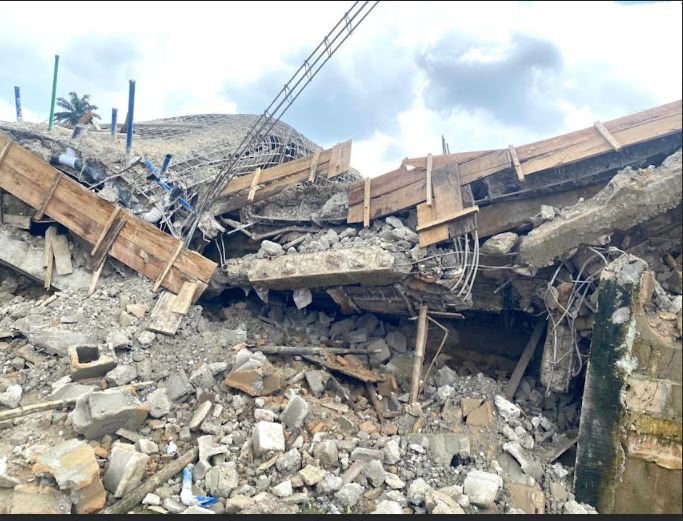The Building Collapse Prevention Guild (BCPG) has painted a grim picture of building collapses in Nigeria, revealing a staggering 1,616 deaths from 653 reported incidents between October 1974 and May 25, 2025. This alarming data underscores a persistent and escalating problem that demands urgent attention. Lagos State emerges as the epicenter of this crisis, accounting for a disproportionate 55.28% of all recorded collapses. Following Lagos, the Federal Capital Territory (Abuja) holds the second position with 4.29%, Anambra State comes third with 4.13%, Oyo State follows closely with 3.37%, and Kano State rounds out the top five at 3.22%. This concentration of incidents in major urban centers highlights potential issues with rapid development, oversight, and enforcement of building codes.
The geographical distribution of building collapses reveals a concerning spread across the nation. While some states, like Zamfara, Taraba, Yobe, Bauchi, Bayelsa, Sokoto, Gombe, Katsina, and Kebbi, have experienced only isolated incidents, others have witnessed a more frequent occurrence. Notably, Taraba, Bayelsa, Gombe, and Yobe states all recorded their first building collapses in 2022, suggesting a potential expansion of the problem to previously less-affected regions. This geographical expansion emphasizes the need for a nationwide approach to address the underlying causes, including standardized building codes and robust enforcement mechanisms.
Analyzing the data chronologically reveals a disturbing trend of increasing building collapses in recent years. While the years 1971, 1975, and 1981 saw no reported incidents, the frequency has escalated significantly, particularly in the 21st century. Even the COVID-19 lockdown in 2020 failed to stem the tide, with 45 collapses recorded nationwide, 40% of which occurred in Lagos. The year 2022 marked a grim milestone, with a record high of 62 collapses, again with Lagos State bearing the brunt with 32% of the total. This upward trend despite periods of reduced construction activity suggests systemic issues that extend beyond simple construction volume.
The trend of increasing building collapses continued into 2023 and 2024. In 2023, 52 collapses were recorded across the country, with Lagos again accounting for a significant 33%. In 2024, the number dipped slightly to 47, spread across 14 states. Lagos retained its unfortunate lead with 13 incidents, followed by Abuja with 6, Anambra with 5, and Kano and Rivers with 4 each. The continuing high numbers, even with a slight decrease, underscore the need for sustained efforts to address the root causes of these tragedies. The widespread nature of the incidents in 2024, affecting multiple states, further emphasizes the need for a nationally coordinated response.
The preliminary data for 2025 reveals a concerning continuation of this trend. As of May 25, 2025, 13 collapses had already been recorded, with Lagos again at the forefront with 7 incidents. While it is too early to draw definitive conclusions for the year, the early figures suggest that the underlying problems persist. The fact that the first incident of 2025 occurred in Rivers State and other states like Ekiti, Anambra, Yobe, Ogun, and Rivers have also reported collapses reinforces the widespread nature of the issue. This consistent pattern across multiple years and locations underscores the urgency of implementing effective preventative measures.
The historical data provides context to the current situation. The first recorded building collapse in Nigeria occurred in October 1974 in Oyo State, claiming the lives of 27 people due to excessive loading. The deadliest incident on record took place on November 1, 2021, in Lagos, resulting in the tragic loss of 52 lives. This stark reminder of the human cost of building collapses emphasizes the need for proactive measures to prevent future tragedies. The data collected by the BCPG provides a valuable resource for understanding the history and patterns of building collapses in Nigeria, which is crucial for developing effective solutions. The consistent pattern of collapses highlights the need for a comprehensive and multifaceted approach that addresses issues such as building codes, construction practices, materials quality, regulatory oversight, and public awareness. Without decisive action, the human and economic costs of building collapses will continue to mount.













